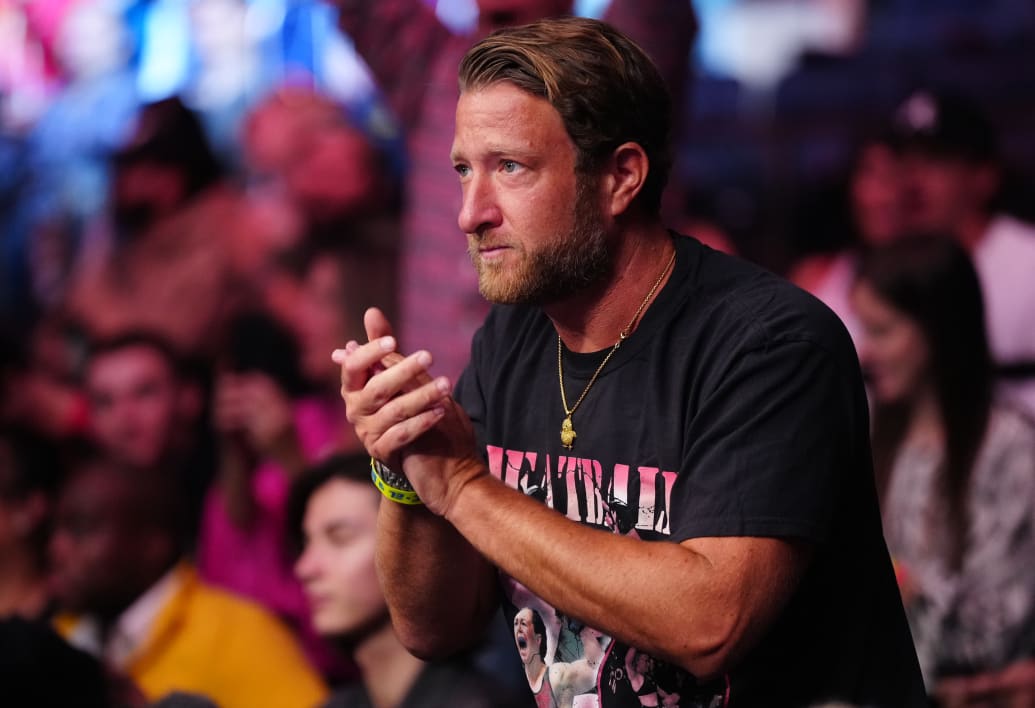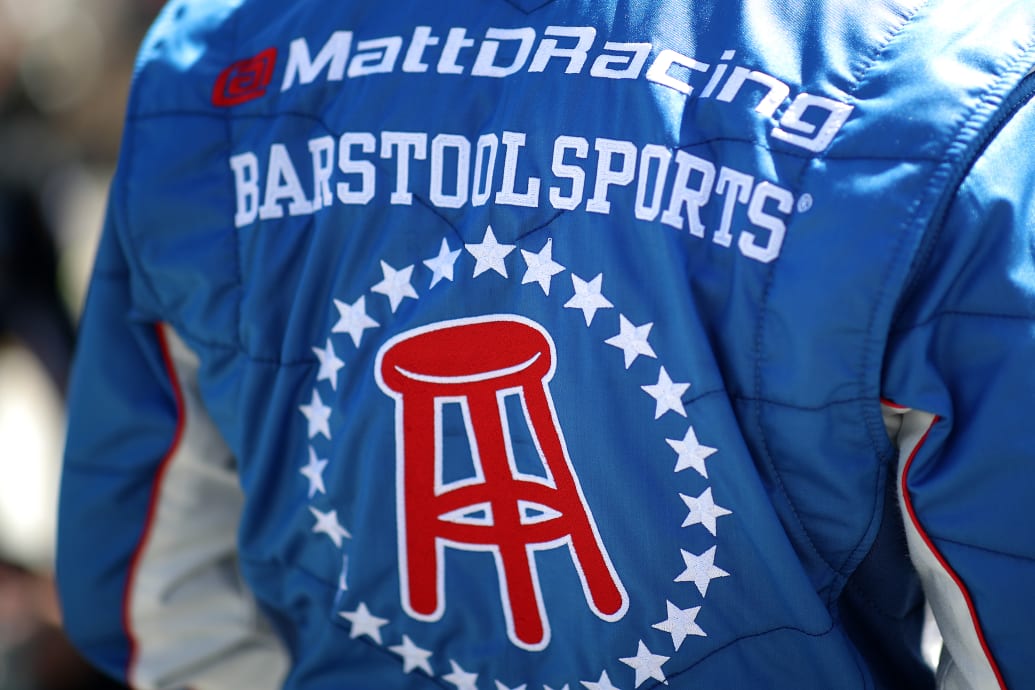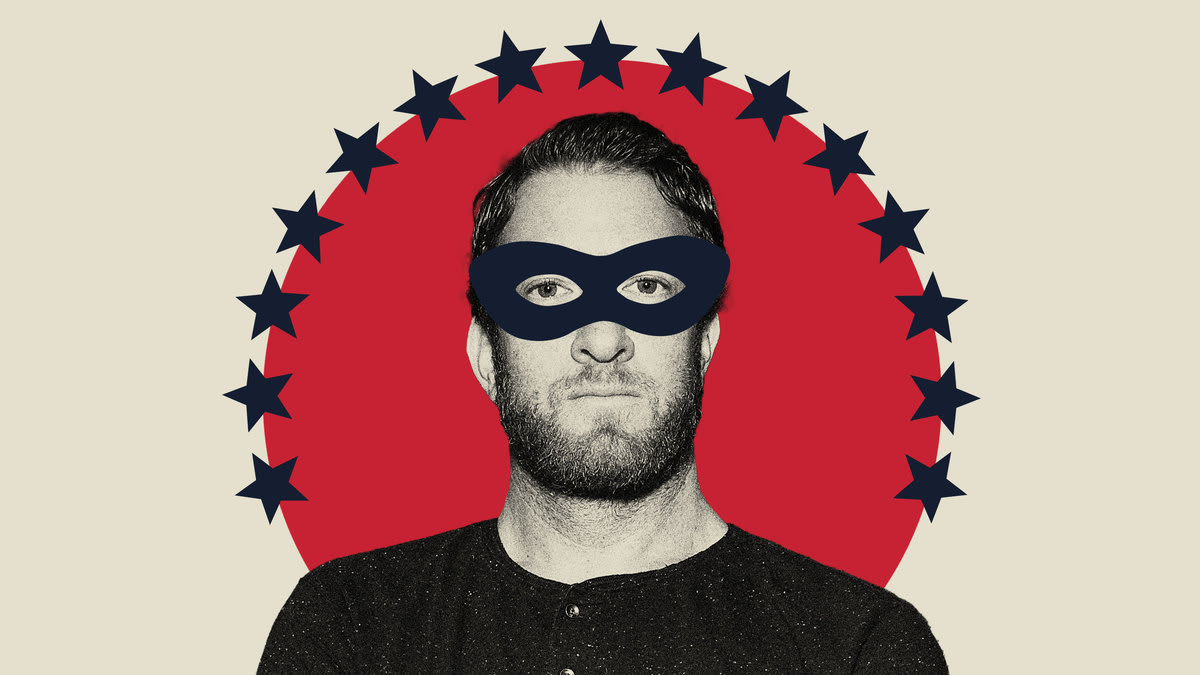Four years ago, Barstool Sports was raked over the coals for taking a comedian’s video. The sprawling and bro-tastic media company already had a reputation for stealing jokes, but that act of theft inadvertently revealed another way the site was profiting from content it didn’t own: an anonymous, seemingly random Twitter account which was in fact run by Barstool.
The innocuous account, one of many Barstool used to harass the comedian, did nothing but rip and post copyrighted sports highlights and other viral clips, which were then embedded and shared by official Barstool accounts on Twitter, which has since been rebranded as X.
It provided a crude but effective way for Barstool to prevent their legit accounts from accumulating Digital Millennium Copyright Act (DMCA) strikes. The law requires websites to remove allegedly stolen digital material while the matter is under dispute. On Twitter, an account found in violation of the law will receive a “strike.” With enough strikes, Twitter will suspend or ban an account.
In this case, only the innocuous video-laundering account would have been penalized if caught, not Barstool. And that’s what happened: Twitter suspended the account at some point after The Daily Beast reported it was set up using a barstoolsports.com email address.
At first blush, the existence of this account read like an odd blip, a remnant of an older, rowdier, and less corporate version of Barstool. But in reality, it was the tip of the iceberg.
A new investigation by The Daily Beast found over 40 more anonymous Twitter accounts that give every indication of being controlled by Barstool. This network has laundered incalculable amounts of copyright-protected sports and entertainment videos and reaped billions of views over at least the last four years. For example: One anonymous account’s ripped video of The Weeknd’s Super Bowl LV performance racked up 36 million views for Barstool in less than 24 hours.
Taken as a whole, Barstool has built out an apparent system of organized copyright infringement.
“Using sockpuppet accounts to obscure the origin of infringing videos does not make the underlying conduct any less illegal,” Matthew Sag, an expert in copyright law and intellectual property and a professor at Emory University Law School, told The Daily Beast. “What it does do is make it harder for the DMCA notice and takedown process to work as intended.”
Neither CEO Erika Ayers Badan nor Barstool founder Dave Portnoy responded to an emailed request for comment.
Social media managers and digital media executives who spoke with The Daily Beast were initially baffled by this high-risk gambit. No reputable media company—let alone one that was acquired in full in January by Penn Entertainment for $551 million and then bought back by founder Dave Portnoy for 1 dollar on Aug. 8—would ever think of intentionally stealing from the leagues they cover and at times partner with, they said.
Then again, Barstool differs from most digital media companies in one important aspect, and the anonymous accounts are a skeleton key unlocking how and why.
In a recent New York Post interview, a Barstool spokesperson claimed they reach one-third of all 18-34-year-olds in the country. The vast majority of that engagement, going by Barstool’s own metrics, comes from social media. That’s not how most media companies calculate their audience size, but for Barstool it’s essential.
Barstool has been held up as one of the rare success stories to come out of 2010s independent digital media, though Portnoy’s recent reacquisition meant large-scale layoffs. They’ve slapped their name on an NCAA bowl game and a line of frozen pizzas, built brick-and-mortar bars and a sportsbook, and, as Ayers Badan bragged to the Post, count “some of the biggest blue-chip brands in the country” as sponsors.
But that social reach—which makes Barstool “bigger” than competitors like ESPN, The Washington Post, and The New York Times, Ayers Badan said in 2020—plays an outsized role in how Barstool sells itself to advertisers, according to Barstool. In many ways, Barstool stopped functioning like other digital media properties a while ago. They’re content creators and influencers, and social media is largely where their audience encounters Barstool content. Again, that’s according to Barstool. By that logic, those oh-so-valuable Twitter accounts not only can’t go dark because of DMCA strikes; they must continue to expand and grow, no matter what.
Two and a half years ago, longtime Barstool personality Dan “Big Cat” Katz unintentionally exposed yet another anonymous Twitter account pumping out clips, including original Barstool material. And if you follow the trail left by that account, you can see how the entire racket works.
Katz and Portnoy were filming a December 2020 episode of their online NFL gambling show, The Barstool Sports Advisors. Portnoy was struggling to remember the lyrics to MC Hammer’s song “U Can’t Touch This,” so his co-host played it on his phone.
After five seconds spent listening to the ’80s pop-rap hit, Katz announced, unprompted, “We’re going to have to put this on a burner now.” The music continued, and an off-camera participant can barely be overheard chiming in, “Yeah,” with a laugh.
Using the song on-air, even via Katz’s phone, could have been interpreted by the rights-holders as violating copyright law. The gambling show’s Twitter account spelled out the problem that night in a reply tweet. “Full video couldn’t be posted because of the music,” @BSSAdvisors wrote.
So how might Barstool avoid this pesky IP problem?
In a corner of the Barstool tweet, you’ll find a link to a much smaller Twitter account: @ChuckTamato. Clicking the link reveals that this account, which had no bio and only a handful of followers, had originally posted an unlabeled two-minute clip of the show, not Barstool.
Thanks to Twitter’s easy-to-use video-sharing function, @BSSAdvisers then uploaded and embedded what appeared to be a @ChuckTamato-created video, added text, and sent it out to their then-80,000-plus followers. The main Barstool Sports Twitter account, which had 2.6 million followers at the time, shared the same clip 10 minutes later, as did Portnoy.
Now Barstool’s worries about copyright infringement had been eliminated—at face value, anyway.
If the rights-holder did file a DMCA claim, maybe @ChuckTamato’s tweet would be taken down, but by that time @BSSAdvisors and @BarstoolSports would already have accumulated gobs of views. Enough DMCA strikes would result in @ChuckTamato’s suspension—it has since been suspended—but no matter. Both of Barstool’s valuable accounts had been safeguarded against that risk. Call it a “burner” like Katz did: a useful if easily disposable tool. (Katz did not respond to an emailed request for comment.)
If it were just a random account, Barstool would be in the clear. But all the available evidence indicates @ChuckTamato was created and controlled by Barstool.
The @ChuckTamato tweet containing the video was posted at 4:24 pm ET. Barstool premiered the Sports Advisors episode on their website over an hour later. The only plausible way @ChuckTamato could have gained access to a video which didn’t exist anywhere online was if Barstool was secretly running @ChuckTamato and uploaded the footage themselves.
A $250 million lawsuit charging Twitter with failing to enforce their copyright policies was filed by 17 music publishers in June. Like Barstool’s pilfering of “U Can’t Touch This,” the suit alleges that 300,000 tweets were posted since December 2021 containing copyright-protected songs.(In response to a request for comment, X Corp, Twitter’s parent company, sent an auto-reply: “Busy now, please check back later.”)
@ChuckTamato was far from the only burner at Barstool’s disposal. The 40 other accounts identified by The Daily Beast share remarkably similar characteristics.

Dave Portnoy, founder and owner of Barstool Sports, attends the UFC 281 event at Madison Square Garden on Nov. 12, 2022.
Jeff Bottari/Getty
They post a continuous stream of highlights from every major professional sports league and the NCAA, plus scores of network and cable TV shows, movies, songs, and viral content Barstool collects and reposts on TikTok and Instagram. Quite often, Barstool passes their own original work through a burner if there’s the slightest chance of a copyright violation, usually whenever a video includes licensed music.
The burners never add any text along with the videos they swipe. This is important. A text-free tweet is impossible for anyone, Barstool or otherwise, to find via a Twitter search. (Twitter’s search engine cannot identify the contents of a tweeted video, just the text contained in a tweet.) They almost never reply to or like other tweets, only have a handful of followers, and are rarely retweeted or liked (prior to Barstool boosting them), which further lowers the odds of someone else spotting and sharing the video before Barstool does to near zero. Official Barstool accounts, though, often embed videos mere seconds after the burner posts them.
Further red flags: One since-suspended burner was, like the one discovered in 2019, set up using what appears to be a Barstoolsports.com email address; another burner was named after a website created by a Barstool podcast; one uses a two-decade old Portnoy alias; yet another uses a spoonerism of Portnoy’s name; and two burners are called a variation on “burner” in their display name.
To be clear, burner-scrubbed videos make up a small percentage of Barstool’s Twitter output. They boast 1,700 official accounts across all their social platforms, a spokesperson told the Post, and generate “100 social clips” per day.
Determining how many burners are currently active is almost impossible; it would require a full autopsy of their entire Twitter portfolio. Many of the burners identified by The Daily Beast have since been suspended, deleted, and/or have had videos removed after DMCA takedown requests were filed, presumably by the rights-holders. (A great deal of their activity was preserved by the Internet Archive and archive.today.) That’s not a problem for Barstool: The video views have long since been tabulated, and if an account is suspended, it only takes a few minutes for someone to create a new one.
Using burners gives Barstool another advantage over their competitors beyond safeguarding themselves against DMCA strikes. Instead of having to wait for an official team or league account to post a highlight, they can target potentially viral material, blast it out, and soak up the first rush of engagement.
A digital executive at a mainstream sports media company that holds broadcast rights said their social team was frequently impressed with Barstool’s ability to jump on a viral clip. (They were granted anonymity to speak openly about a competitor, and had previously been unaware of the burner accounts.) Their social team will on occasion get jealous, saying, “Damn, Barstool got it first.” This is a common sentiment in sports media, the executive added.
The Daily Beast first uncovered a Barstool-owned burner in 2019 while reporting on how Barstool stole a video from comedian Miel Bredouw. Apparently Barstool was so concerned with receiving a DMCA strike, they bombarded her with dozens of messages from different Barstool accounts, begging her to drop her complaint.
The backlash was swift and widespread, to the point that critics compared Barstool to the notorious joke thieves FuckJerry. The site then deleted 60,000 old social media posts, possibly to avoid someone else coming forward with allegations they’d been ripped off, too.
Ayers Badan did some damage control, insisting none of the theft was deliberate. Barstool was “overhauling” their internal procedures, the Barstool CEO told Fast Company, to prevent any future transgressions. “We don’t want to steal people’s content,” she promised.
Content had been taken in the past, and not just on Twitter. Barstool was among a handful of sports media companies whose Twitter accounts were hit with DMCA notices by the NFL in 2015, and subsequently suspended. Their main Twitter account was suspended again during the 2016 Summer Olympics for posting a Vine from the Games.
Portnoy wrote a blog post complaining about the temporary loss of Barstool’s accounts in 2015. It led to more theft. He selected a photoshopped image of NFL Commissioner Roger Goodell dressed as Hitler for the art. The image first appeared in 2012 on a dormant WordPress blog run by someone unaffiliated with Barstool and was seemingly taken by Portnoy without permission or compensation. Portnoy has reused the photoshop in a few Barstool blogs, as recently as 2020.
Four months after the Bredouw incident, and after he’d told New York magazine, “our intent is never to steal other people’s content,” Portnoy swiped CNN-created artwork for a different blog post. A CNN spokesperson said in an emailed statement: “CNN’s design team created this illustration in 2019 and maintains the copyright protections.”
Other Barstool personalities have run into similar issues when selecting artwork for blogs. According to blogger Kyle “KB no swag” Bauer, Barstool was hit with “eight lawsuits” in the two months after his hiring in 2019 over the unauthorized use of copyrighted photos. In 2020, podcasters Kate Mannion and Matthew “Uncle Chaps” Cothron said they got sued “a lot” for using copyrighted photos because Barstool didn’t explain how to use their subscription to Getty Images.
But the longest-running and most regularly occurring potential violation comes from the burners.
Sag, the copyright law professor, had never heard of anyone laundering copyrighted material in this way. “It’s definitely uncharted territory,” he said.
Seven to eight years ago, maybe, a media company would help themselves to whatever IP was floating around online, the digital executive at a sports site said. The boundaries could be difficult to parse in 2015. Then Twitter launched its video embed function.
“Twitter made it really easy to never have to worry about violating the rules,” they added. “That’s the funny thing about it.”
Two former sports media social managers who spoke with The Daily Beast said they’d never consider using burners, nor had they heard of any other shops that did. Both requested anonymity to speak freely without being harassed by Portnoy and devoted Barstool fans.
A person who ran the social media team for a sports media company told The Daily Beast their site had a branded partnership to use NFL highlights, and they were contractually barred from syndicating them to social media. “That was absolutely not allowed,” they said. One time, their site accidentally posted an NFL GIF and they received a cease-and-desist letter from the league.
A social media manager for a different sports site expressed frustration. Unlike Barstool, “Everyone has to play by those rules and avoid DMCA [takedown requests] at all costs,” they said.
It’s not born out of ignorance.
“We have all been strictly informed that no MLB content should be disseminated from our accounts because it's not worth the risk,” Barstool general manager of comedy Kevin “KFC” Clancy wrote after he caught flak for taking a GIF in 2018. Yet Barstool burners to this day rip and post copyrighted MLB highlights. (Clancy did not respond to an emailed request for comment.)
There is one possible reason burner videos continue to populate Barstool’s Twitter accounts—namely how Barstool tabulates their audience size and growth and why advertisers get into bed with them.
In SEC documents filed when Penn acquired a minority share in 2020, Barstool claimed to have 66 million “monthly unique visitors.”
To come up with that figure, subscribers and followers on Barstool’s social media are lumped together with podcast listeners, merchandise purchasers, and website readers. (Social makes up a significant majority.)
On the day of the acquisition, Ayers Badan told CNBC’s Jim Cramer they have “almost 70 million fans who are engaging with us every month,” which seems like a more accurate descriptor than the SEC filing. From their perspective, anyone who has encountered Barstool online on any platform can be considered part of their audience.
This is not standard practice for digital media companies, according to the first social media manager. “No one else does that,” they said.
On the other hand, influencers do. In the 2020 SEC filing, Barstool claimed their website and app had 14.7 combined monthly unique readers. SimilarWeb estimates the site had 7 million visitors in June. Their social media stats, in contrast, have skyrocketed.
By 2022, the number had jumped to 153 million people “who follow us and engage with us” each month, Ayers Badan claimed. In July, a Barstool spokesperson claimed they hit 220 million. Now, it’s reportedly 250 million.
That exponential growth is central to Barstool’s pitch to advertisers. The podcasts remain wildly popular and bring in tons of advertising revenue, and the parasocial relationships Barstool fans develop with the personalities moves a lot of merchandise. It has made them “one of the more powerful advertising platforms,” per Vanity Fair. But in the Post interview, Ayers Badan cited their ever-expanding social presence as one of the main reasons why Chevrolet and Molson are now sponsoring Barstool content.
Portnoy laid it out in a 2019 tweet: Advertising sales are directly tied to Barstool’s social engagement.
“[W]e sell ads against my Twitter followers and interactions,” he said. “So you talking to me is putting money in my pocket. I’m literally telling the haters the only way to win is ignore me. And you can’t.” (Portnoy, too, shares burner-scrubbed videos on his 2.9 million-follower personal account.)

The Barstool Sports logo appears on the jacket of a NASCAR driver.
Chris Graythen/Getty
Think of Barstool as less a media company and more a collab house, and all of this makes way more sense. In order to keep achieving eye-popping social growth, like influencers, Barstool is motivated to keep churning out viral content, even content other media companies can’t access. At the same time, they have to sidestep copyright law and avoid Twitter suspensions. Burners make it possible to achieve both goals. To juice the stats, Barstool regularly re-posts their TikTok videos on Twitter. If the TikTok videos include copyrighted music, they’re first ripped and posted by burners, too.
Ayers Badan seemed to wink at this aspect of their business model in a recent pillow-soft Vanity Fair profile. Barstool is built not just on “entertainment, satire, [and] comedy,” she said, but “opportunistically capturing and creating viral conversations on the internet.”
Whether Twitter remains a place where legit businesses can thrive is another matter. Since Elon Musk bought the site, traffic has plunged, while spam and hate speech has reportedly flourished. If nothing else, Barstool, a verified Twitter organization paying at least $12,000 annually, probably doesn’t have to worry about beefed-up copyright enforcement, nine-figure lawsuits by music publishers and photo agencies notwithstanding. To date, Musk—an infamous joke thief—has expressed more concern about users who file frivolous DMCA takedown requests.
This is not to say stealing content on Twitter (and the site’s inability to police it) is a recent phenomenon. But nowadays, full-length pirated Hollywood movies will remain live for hours before the gutted staff gets around to removing them. Musk-era Twitter also features video-swiping accounts that use the same kind of DMCA-strike-avoiding burners as Barstool. Still, none of them come close to approaching Barstool’s prominence or revenue.
The day after Kobe Bryant’s death in 2020, a Twitter account posted a clumsily cropped copy of an old interview Katz conducted with Bryant. The ripped video—which cut Katz out of the frame and removed Barstool’s logos—went viral, garnering over 130,000 shares, half a million likes, and 12 million video views. Katz was tweeting other excerpts from the Bryant interview, too, but the stolen clip was hoovering up a lot more engagement.
Katz—who occasionally skips the burners and rips copyrighted videos himself—complained. Not so much about the stealing; it was the hypocrisy that really bothered him.
“I honestly don’t care about videos ripped without attribution, it’s the internet, it happens,” he said in a reply tweet to the account that stole from Barstool.
“I just want it on the record if roles were reversed here Barstool would get DRAGGED.”

